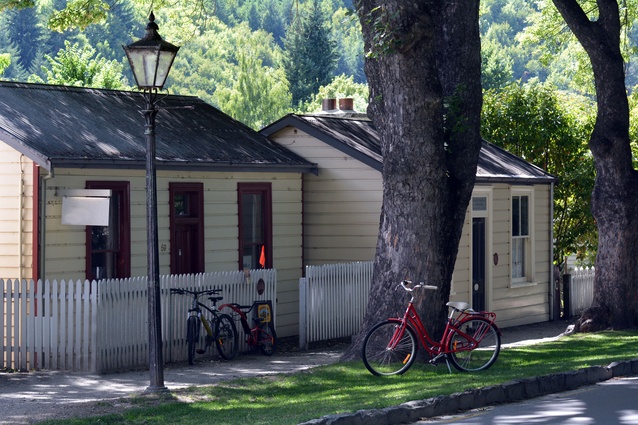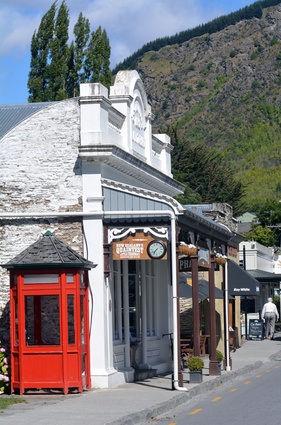The heritage problem
Is enough being done to help owners of heritage-listed earthquake-prone buildings who are unable to either finance strengthening work, or demolish their buildings?
There could be a flood of applications to demolish heritage-listed earthquake-prone buildings in the not too distant future because it is not economic to strengthen some buildings, Wellington City Council manager of earthquake resilience Neville Brown says.
Following the Canterbury earthquakes and other more recent quakes in Cook Strait, heightened public awareness of safety issues in earthquake-prone buildings has affected tenancies and the value of heritage and other buildings built below the current Building Code standards.
Private owners of heritage-listed earthquake-prone buildings (listed on the District Plan and/or registered with the New Zealand Historic Places Trust (NZHPT)) are facing critical issues surrounding the cost of strengthening their buildings. Some have run out of ideas, Brown says. The time and cost involved in having buildings assessed and brought up to code can be prohibitive. Meanwhile, the value of the buildings has dropped, tenants are leaving and the owners’ rental income is in jeopardy.
Brown says there are a wide range of owners in this situation including professional building owners and a few who specialise in the ownership and retention of heritage buildings; local investors who happen to own a heritage building because of the location; ‘mum and dad’ investors who may have changed from a residential to commercial portfolio and now own a heritage building; apartment owners and body corporates, who now realise “with horror and dismay” that they own and are living in a heritage-listed earthquake-prone building, Brown says. “The folk at this part of the spectrum probably don’t need to have explained to them what heritage means and what they have to do to protect the elements of heritage – so then it’s about cost. And how do they do this?”
He says it is unlikely any of them have building management experience.
“One of the things my group does is spend time with the chairs of those body corps, walking them through the process, directing them to the right people to get the right information and helping them with funding applications - particularly through the heritage phase.”
For those who own buildings listed as Category 1 and 2 on the NZHPT register demolition is rarely an option as developer Mark Dunajtschik, the owner of the 85-year old Category 1 Harcourts Building on Lambton Quay in Wellington, found when his application to demolish was declined by Wellington City Council (WCC)commissioners. The Environment Court upheld that decision and Dunajtschik is now taking his case to the High Court.
Malcolm Fleming, former director of Accent Architects, who is now working in commercial real estate, interviewed 12 heritage building owners in Wellington as part of his research for a Master of Management on “Stewardship and the outlook for heritage buildings in earthquake-prone Wellington.” Fleming owns an earthquake-prone building in Thorndon and has worked in a heritage-listed earthquake-prone building, which tenants fled when their leases expired.
“This put pressure on the landlord, a really common story in Wellington. We had a very passionate building owner – a family of some means – and they brought it up to over 70 per cent of the new build standard (NBS), which is generally acceptable to commercial tenants. Now they have leased it back up with a marginal 10 per cent lift in the rent.”
The value of his own heritage property has eroded; it would need to be strengthened to two-thirds of the building code to retrieve its $1.75 million rateable value.
He says the bulk of construction work in Wellington is about value retention; people spending money on earthquake strengthening and retrofitting to return buildings to their former values.
“If they don’t, they lose tenants and won’t be able to attract new ones.”
Fleming sees “huge tension” between the purported positions of the general public and the private owners of heritage buildings. “The public see these buildings as a public good and want them to remain in our built environment but don’t want to pay for it.”
Costs of seismic strengthening vary on a case-by-case basis, as does building owners’ capacity to pay for the processes of assessment, planning, resource consent, heritage architect reports, engineering and strengthening.
Brown is aware of a perception that the resource consent process takes too long, and that councils could do more to fast track and make the process easier.
“We try and say, don’t panic it takes time. As long as you can demonstrate you are making progress and moving towards a strengthening solution, in terms of the act, you are complying by taking all practical steps.”
In the next annual plan WCC has proposed two initiatives that have been “warmly received by the building sector.”
“If you are going to strengthen a building and have to vacate it you can apply for rates relief. The level of rates will be reduced. For owners who have already strengthened the building, the proposal was for three years rates relief. When the value goes up so do the rates. This mechanism postpones the impact of the valuation uplift for three years.”
This may change based on submissions.
In addition to strengthening, there are the other costs when owners apply for a building consent. Fire systems have to be brought up to current code as well as disabled access. A lift could easily cost $350,000.
“When you consider that the building owner has to balance those costs against the revenue that is earned from the building it’s a tight balance,” Brown says.
Funding is available through WCC - $400,000 dollars in the next financial year. “We have been getting 15 to 20 applicants every funding round – around $30,000 each. That would buy a heritage conservation plan and a detailed seismic report from an engineer,” Brown says.
In historic, low-rise Cuba Street and Newtown, WCC is encouraging owners to collaborate where there are opportunities to bolt buildings together as part of a strengthening programme and this may be possible in other centres.
A significant number of heritage buildings are at risk in provincial towns and cities.
The NZHPT frequently holds public seminars for property owners, engineers and architects giving advice from expert engineers, particularly with knowledge of heritage buildings about the process for assessments of buildings and engaging the right expertise to advise.
Whanganui is home to 11 per cent of the country’s heritage-listed earthquake-prone buildings. The city’s built heritage is a major tourist attraction, and its retention is considered critical to Whanganui’s survival and long-term future.
David Corney of DML Building has bought a number of older buildings in Whanganui with the intention to strengthen them and says this has attracted blue chip tenants [national retailers] who can pay the higher rents. DML and engineers EQ Struc have strengthened a number of privately owned buildings. One major retail tenant was going to move out if half the building wasn’t brought up to 67 per cent of NBS within a short timeframe.
“That put a huge amount of pressure on the building owners. Council were very helpful and we moved into an emergency works exercise,” Corney says.
“The first question we are asked as engineers is ‘how much is the cost of the retrofit?’ and then, ‘how long will it take, how long will tenants be out of the building?’“ says Dmytro Dizhur of EQ Struc. “There seems to be closer, more helpful relationships here than in Auckland [where he is based], which makes the project go forward quite quickly.”
The NZHPT’s National Heritage Preservation Incentive Fund assists private owners of Category 1-registered heritage properties with earthquake strengthening assessment reports and some work. The total annual fund is $500,000 with an upper limit of $100,000 per application, but sums approved are usually far less than this amount, says David Watt, NZHPT central region area coordinator.
“We have applications that far exceed available funds [and encourage all] councils to develop incentive funding for this kind of work. In addition to local government funding, there is a hope that central government will also provide some assistance for this nationwide issue. We await an outcome on this. There needs to be this assistance for properties with a public as well as a private benefit.”
Brown says the government is likely to let “the market” decide.
“The changes in the Building Act relative to earthquake-prone buildings are being read and have now gone to select committee. The wording is interesting because it talks about market forces deciding the fate of the building in terms of what strength it should be. Where the economics don’t stack up and where demolition happens to be an option then my sense is that government won’t be funding. It will let the market decide. How much is too much is what we as a society will have to decide.”












